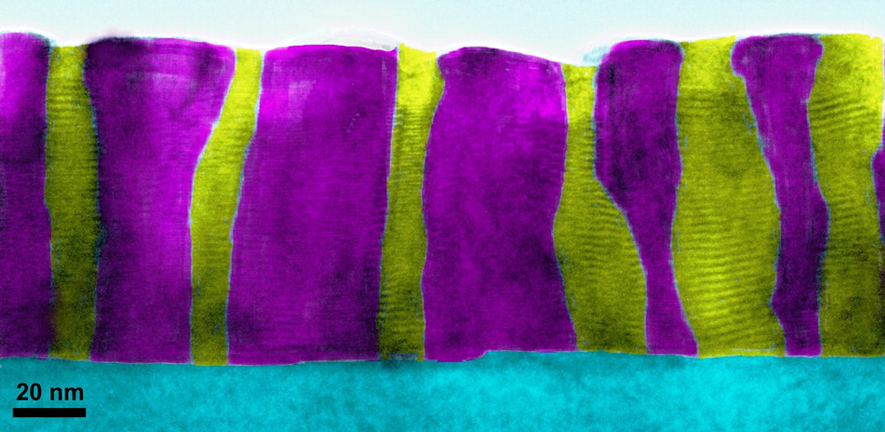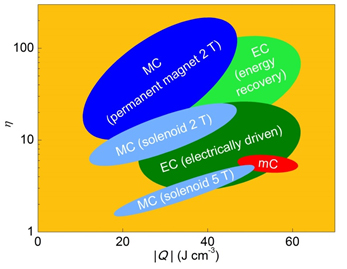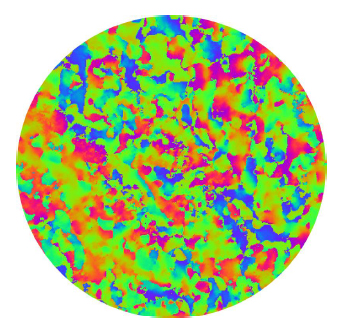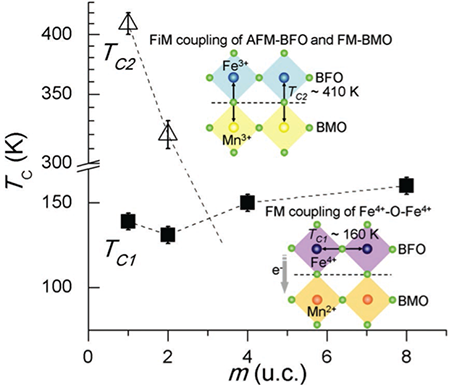
Banner image: False-colour cross-sectional TEM images of LcmO–ZnO nanostructures in low magnification. (Thomas Fix; Eun-Mi Choi; Jason W. A. Robinson; Shin Buhm Lee; Aiping Chen; Bhagwati Prasad; Haiyan Wang; Mark G. Blamire; Judith L. MacManus-Driscoll; Nano Lett. 2013, 13, 5886-5890.)
The ability to control interacting degrees of freedom in materials that may be combined in different geometrical arrangements opens up a wide range of functionalities for applications. One may thus use a magnetic field, electric field, stress field or temperature change to control any of the conjugate variables, and vice versa.
 Electrocalorics
Electrocalorics
Applying a voltage across a ferroelectric material can switch ferroelectric domains below the Curie temperature, but near the Curie temperature an applied voltage can drive the ferroelectric phase transition itself. Driving and undriving such phase transitions produces large thermal changes known as electrocaloric effects, and these could be exploited for low‑power cooling applications. Here we study a range of electrocaloric materials, using a range of measurement protocols, in this rapidly growing area.
The image to the right shows the energy efficiency η (described as the heat transferred Q divided by the external work W) for electrocaloric (EC), magnetocaloric (MC) and mechanocaloric (mC) effects. [After Nature Physics 11 (2015) 202].
 Magnetoelectrics
Magnetoelectrics
The image shows magnetic domains in a manganite film whose magnetization is inhomogeneous in magnitude. Field of view has diameter 6 mm. [After Nature Materials 12 (2013) 52-58].
 Emergent quantum phenomena at heteroepitaxial oxide interfaces
Emergent quantum phenomena at heteroepitaxial oxide interfaces